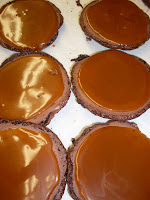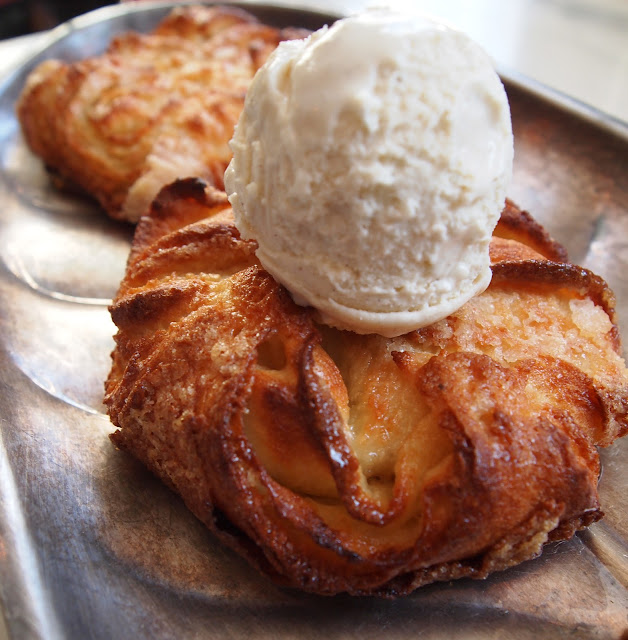Sweet and Sticky: Caramel Recipe

"Hey babe? There's something here on the stove boiling. Looking a little brown and nasty."
"Shit! I forgot I put the sugar there. Hey, this ain't half bad."
I always imagine how culinary standards first came to be. Like who was the first person to figure out how to use yeast and make bread? What compelled them to combine flour, water and a living smelly beast and think to themselves "This is gonna be TASTY!" Who made the first roux and added what amounts to kindergarten paste to a soup to thicken it? The legend of laminated dough is well documented in pastry mythology. When an apprentice screwed up in the middle of the night and forgot to add butter to a recipe, he decided to fold it in. And there you have the genesis of puff pastry, croissant and danish. But what about the other stuff, like caramel? Accident? Experimentation? Prophecy?
When I found out that Dulce de Leche, an Argentinean caramel sauce of great renown, was made from sweetened condensed milk, I almost wet myself in disbelief. Really? People spend twelve bucks on a little jar of beautifully packaged caramel exotica hand packed by genuine gauchos and all they needed to do was poke a hole in a 14 oz can of Carnations and shove it in the oven for a day? Damn.
Straight caramel is even simpler, a lot harder to wrangle, but it requires only one ingredient to evolve. Sugar.


(Chocolate meringue with caramel and finished with ganache and a lid)
Sugar, properly melted and brought to 300, or hard crack stage, can coat popcorn or grace the top of a puff pastry to add a glitzy sheen and crunch. This is also the stage of brittle or toffee. Cook to 240 and you've got traditional caramel or firm ball stage. Take it up a little hotter, to 250 to 265 to hard ball and you're messing with nougat and marshmallow. Personally, this is how I like my straight caramel. I add a little heavy cream, a pinch of salt and a pat of butter. Lock the door and I'm set for the evening.
But something so delicious is never that easy. Just melt sugar, check the temperature and you're set? So why did my melting sugar suddenly

seize and form a staging area for Sea Monkeys? Ahhh. Well, it crystallized. Because if you weren't babysitting, taking a little pastry brush dipped in water and running it along the edges of the pan to make sure all the clinging sugar crystals have melted, they're going to end of revolting and screwing up your caramel and your pan. The technical term, and I'm not kidding, is "the sugar has died." Even if you dote over it, it can still kick the bucket. You increase your odds by using a copper pot. Copper conducts heat beautifully and pretty evenly. Still not a guarantee.
(caramel and coconut!!)
But I'm going to tell you something that most people don't know. Add a squirt of lemon. It's a miracle.
So for straight caramel, here's what you do:
2 pounds of granulated sugar in a stainless steel or copper pot
In a metal bowl, add cold water and a bit if ice to half way point. Set aside.
Add a teaspoon of lemon juice to sugar.
Cook over low heat, stirring constantly, until the sugar is completely melted.
Continue to cook until the sugar is light amber. It will continue to get a bit darker but it take it off the heat and immediately place the bottom of the pot in the ice water.
OR take off the heat and add a cup of heavy cream and an once of butter. Caramel sauce. It's going to bubble like crazy when you put in the cream so stand the hell back. Experiment and enjoy. You'll find yourself wondering, "Who first came up with this deliciousness? And bless them for doing it."

